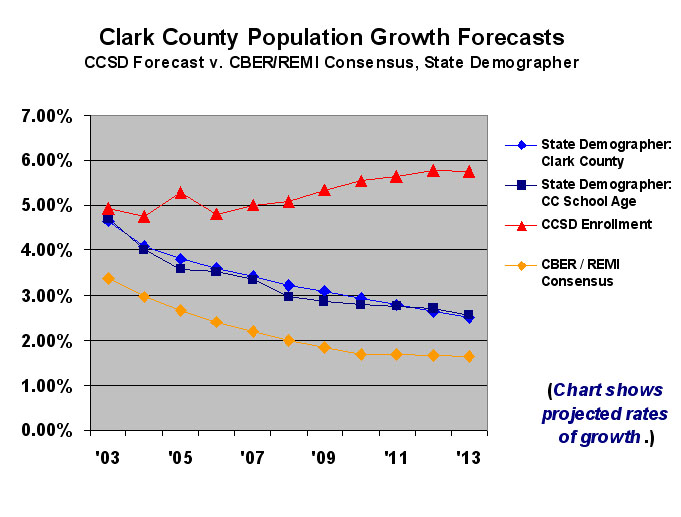The Private Sector Would Do Better
Evidence just keeps stacking up: Nevada’s two metropolitan school districts are too large and bureaucratically ingrown to do their jobs.
We’re not speaking here of how poorly the Clark and Washoe county school districts perform their basic mission of educating Nevada students.
That story, reported for years now, is very old news.
In the spotlight instead are some indications of the quality of district business management. While these indicators have received little public attention, they are nonetheless quite revealing. And the revelations do not fit the image so carefully cultivated by the districts’ expensive public relations operations.
Item: The Clark County School District, notwithstanding its large and generously compensated bureaucracy, has difficulty keeping track of large chunks of its cost structure. We know this because of a May 2003 study the district itself commissioned.
Entitled “Clark County Schools School Transportation Cost Report,” the study was conducted by three Tennessee consultants who do business as Southern Educational Services (SES).
The study’s purpose? To identify “the total and complete costs as well as route costs for the transportation services provided by the school district,” according to the study’s Report Overview.
Of the report’s 55 pages, 52 are devoted entirely to descriptions and inventories that finally allow the report authors to announce “the true and complete cost estimates for transportation services in the Clark County School District in 2002-2003” as $77,492,683. Two-and-a-half pages are then devoted to breaking down transportation costs on a per route basis.
It is common for both public and private entities to commission outside reviews for the purpose of identifying either waste or possible new efficiencies. It is not common for such entities to need to hire outside contractors to identify the entities’ costs.
A frequent charge leveled at government agencies is that, because they spend taxpayer money, they are less attentive to cost and waste issues then are private-sector managers, who either succeed or face bankruptcy. In the case of the Clark County School District, this accusation appears well-founded. The Tennessee consultants identified over $18.1 million in insurance, maintenance, operation and capital costs not covered in the transportation budget. A second study conducted in 2003 noted that the accounting framework used by the district did not allow it to closely track the transportation division’s personnel expenses—identified by SES as making up about 65 percent of division costs.
Item: The Clark and Washoe school districts both continue to publicize increasingly dubious enrollment forecasts. Each district received a rude shock last September when student enrollment for the 2005-2006 school year turned out substantially below district projections. Since school district income from the state is keyed to enrollment numbers, such forecasting errors have serious results for district budgets and planning. Nevertheless, the districts are continuing, as they have for years, to forecast enrollment numbers and rates of growth that are substantially higher than other entirely credible consensus forecasts for these counties.
Each year in Clark County, for example, the Center for Business and Economic Research at UNLV, together with the Southern Nevada Water Authority, the Clark County Comprehensive Planning department and the Regional Transportation Commission of Southern Nevada develop a long-term consensus forecast of population growth for Clark County. Using a 53-sector economic and demographic model designed by the well-know Regional Economic Models, Inc. (REMI) firm of Amherst, Mass., the consensus forecast shows population growth for the county, but at a declining rate.
The growth-rate trendline of this consensus forecast—like those produced by the State Demographer’s forecasts for both Clark County’s total population and for its school-age populations—diverges significantly from that produced by the Clark County School District’s in-house demographics division. (See chart.)

According to a September story in the Las Vegas Sun, about 5,300 students fewer than projected enrolled in the CCSD this year. Instead of the forecast 5.10 percent rate, enrollment grew at a rate of 3.2 percent. Since the state pays the Clark district roughly $4,300 per student, the smaller enrollment means an unforeseen $22.8 million hit to the current CCSD budget.
In the Washoe County School District, according to a September Reno Gazette-Journal story, the district expected more than 1,370 new students but enrollment grew by only 117. Actually, according to a forecast on the WCSD web site, the district expected 1,933 new students. Because the state pays the Washoe district roughly $4,405 per student, the hit to the WCSD budget was either $5.6 or $8 million—depending on the forecast the district actually used.
The private sector would do better.
Steven Miller is policy director for the Nevada Policy Research Institute.